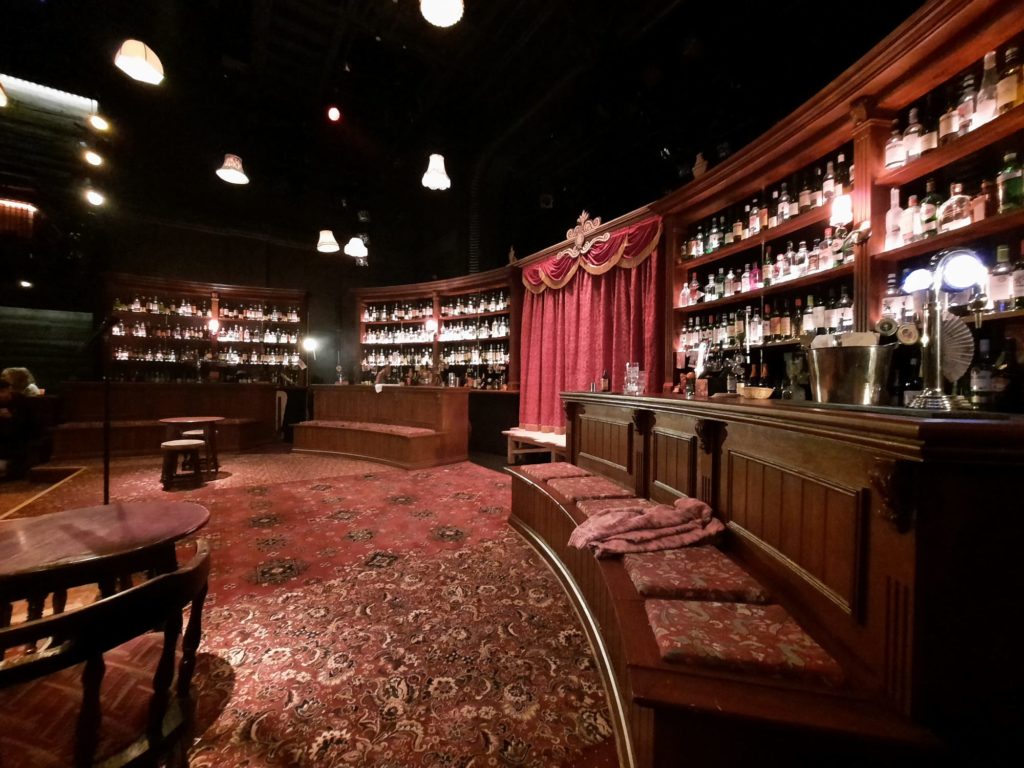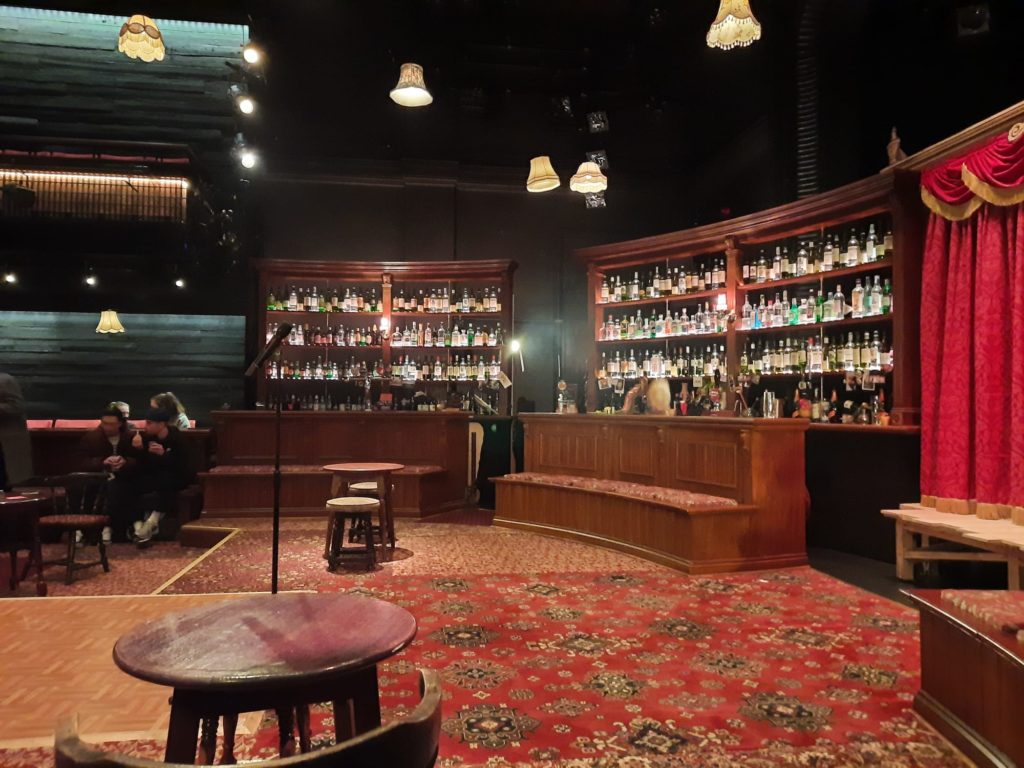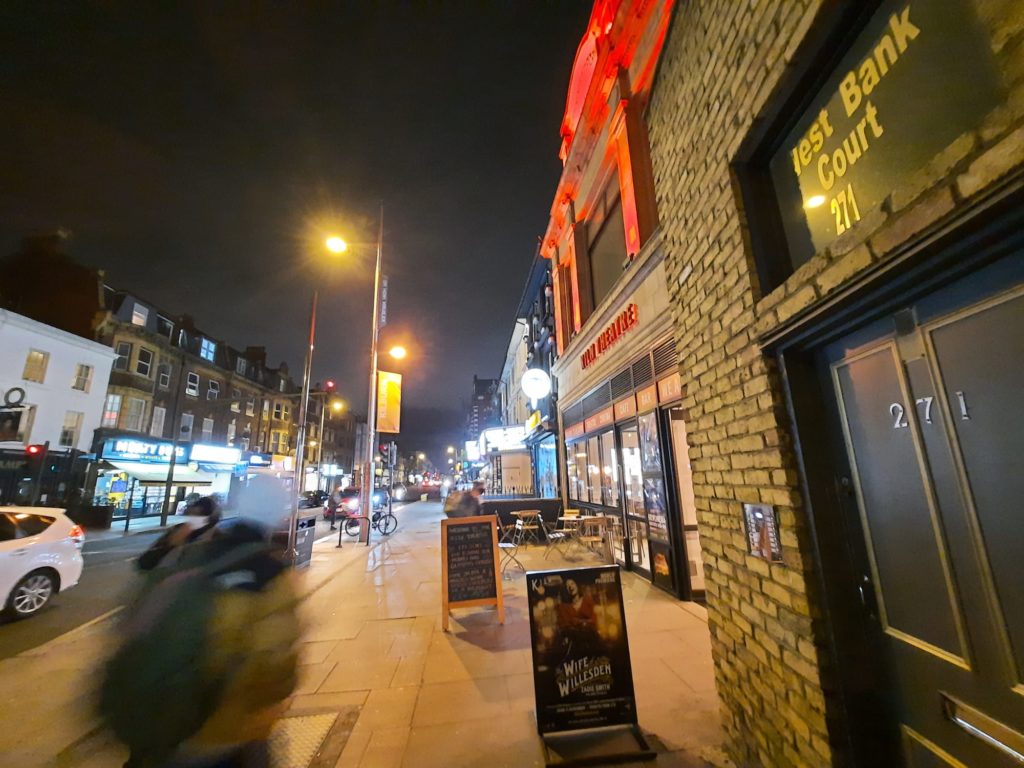The Wife of Willesden – Kiln Theatre, London
A bold reinvention of Chaucer’s tale of the Wife of Bath, The Wife of Willesden modernises this medieval story while preserving its identity.
The Wife of Willesden
It’s a bit like Dante’s Inferno: I’ve never read The Canterbury Tales and I probably should have. Big impact on our subsequent cultural life and all that! Luckily there is Wikipedia for this sort of situation – over dinner on Kilburn High Road, my theatre buddy and I brushed up on what we needed to know before seeing The Wife of Willesden.
If you, like me, still have Chaucer on your reading list, let me help. The Canterbury Tales are of course the story of a group of pilgrims heading for Canterbury to visit the shrine of St Thomas Becket. Geoffrey Chaucer wrote the work between 1387 and 1400. There are twenty-four tales, some in verse and some in prose. The format is a story-telling contest between the pilgrims. There are also prologues to introduce characters, a very important feature for both The Wife of Bath’s Tale and The Wife of Willesden.
So who is/was this Wife of Bath, then? Well, she is one of Chaucer’s pilgrims, named Alisoun but normally referred to as the Wife of Bath. She is a bawdy character, and the status of wife is perhaps her defining characteristic. The prologue describing her is actually longer than the tale she enters into the storytelling contest; she describes and defends her five marriages, calling out the double standard in how men and women are judged on their relationships. The tale itself seems like fairly standard stuff by comparison – a knight is punished for un-knightly conduct (rape) and ends up ensnared in marriage with an old hag. But it’s ok, she becomes lovely and everyone lives happily ever after. Phew!
Bringing The Wife Of Bath To 21st Century Willesden
So that’s the source material (in a very small nutshell). The Kiln Theatre production on now is a Zadie Smith adaptation, which updates the Wife of Bath’s story. Smith started out writing it as a monologue, but a full-scale play has emerged. Alisoun has become Alvita, and the pilgrims’ story-telling contest a pub lock-in. Otherwise the key elements are retained. There’s a prologue and a tale, the former much longer than the latter. Alvita is a sex-positive woman with five husbands under her belt. Actually it’s amazing how little things have changed here – what was shocking in 1400 could still be considered transgressive now.
The translation of the Wife of Bath to the Wife of Willesden is on the whole a successful one. There is a real sense of place to Smith’s adaptation, and a warmth towards local places and local characters. The physical setting is also cosy and inviting. The Kiln Theatre has transformed itself into a pub, with worn carpets, tables and stools for characters and some of the audience, and even seating on the stage. My theatre buddy and I took a risk and chose seats here. It paid off! Sitting right next to the characters made it an immersive experience, even if the action wasn’t always directed towards us.
The small cast play different characters, and evoke different settings. There is the pub scene with local residents. The five husbands and supporting characters in their stories. And the world of the Wife of Willesden’s tale. This latter story has been transported from medieval chivalric setting to 17th Century Jamaica; the knight is now a Maroon. The movement, costumes and direction are all very effective at creating the Wife of Willesden’s world and sharing it with the audience.
Not A Monologue, But Almost A One-Woman Show
The thing which absolutely makes The Wife of Willesden is its title character, played by Clare Perkins. As Alvita she is bold and confident, but also vulnerable. She’s the life and soul of the party – unashamedly herself, warts and all. Perkins plays the character so naturally that (particularly from our vantage point on stage) you feel like you’re there, in the pub lock-in, as Alvita tells her story. It’s a charismatic and impressive performance.
If I have any small critique of the production, is that the energy starts high and remains there. There are funny moments and serious moments, but the 95 minutes could maybe have done with a few more highs and lows to keep the audience energised. Perkins does a good job of bringing the audience along with her nonetheless.
The run of The Wife of Willesden is sold out, but keep a eye on the Kiln website for returns if this review has sold you on it. Watching a completely contemporary adaptation, in the place that is being written about, feels very special. And with all the immersive stagings popping up on the London theatre scene at the moment (Cabaret, Moulin Rouge…), it’s nice to see one that is so accessible and down to earth.
Salterton Arts Review’s rating: 4/5
The Wife of Willesden on until 15 January 2022
If you see this after your page is loaded completely, leafletJS files are missing.




